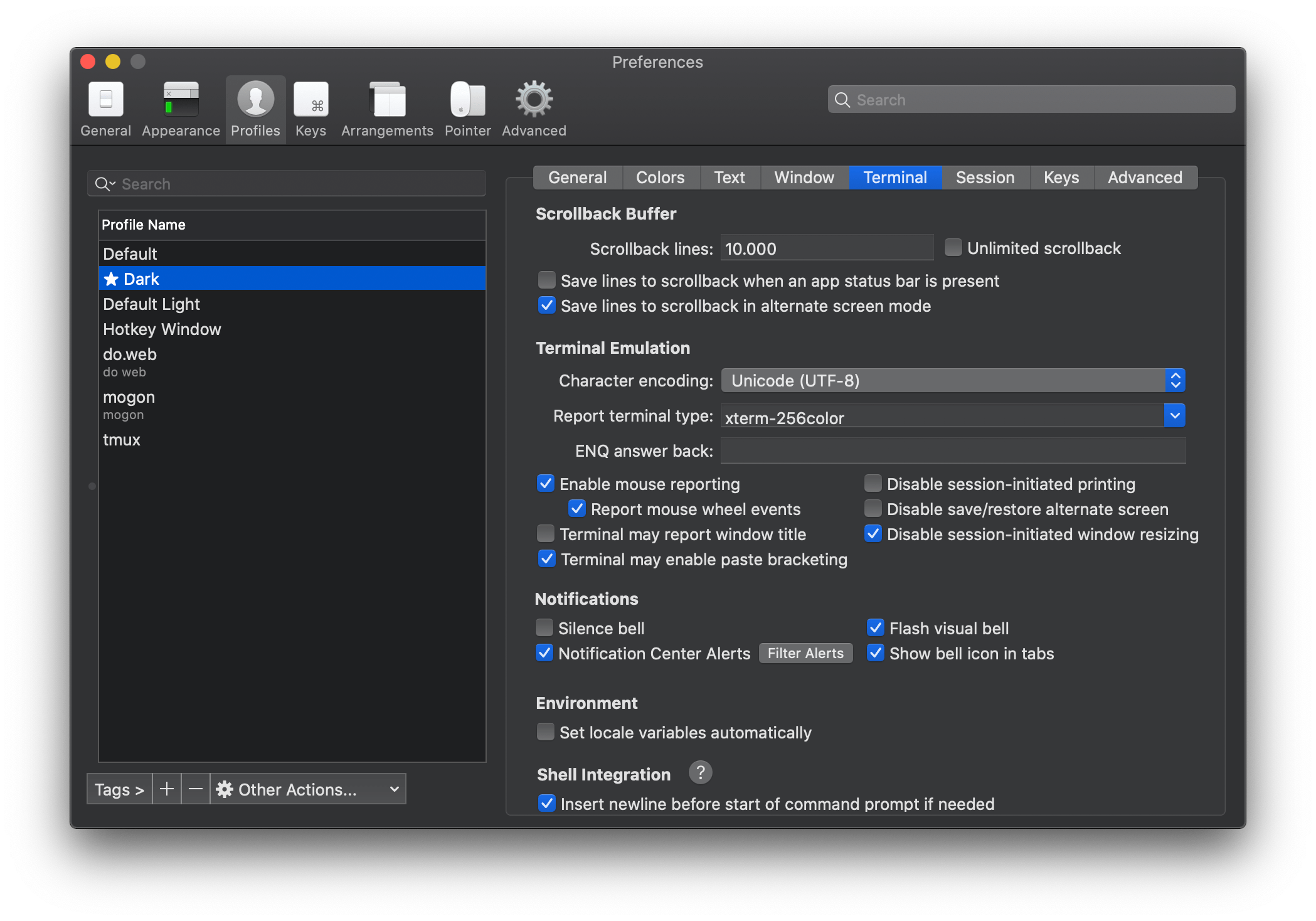

Iterm tmux windows#
Normally, when you use tmux, multiple virtual windows are displayed in a single "physical" window. It's complicated but we have four different views at the same time just for this example.ITerm2 is integrated with tmux, allowing you to enjoy a native user interface with all the benefits of tmux's persistence. Tmux creates "windows" which each has the ability to split the window into smaller windows called "panes". Tmux should be installed on your remote host, but if you are doing mostly local work, running a local version is no problem.

Once you have the package installed, you can confirm the version number, for this demo I am using Tmux 2.4. This installs the latest version of Tmux.
Iterm tmux install#
If you are on a Mac, Homebrew can install the latest version with the following command. Note - I tried both the package version from yum and building my own version, which I didn't find any big differences. So you need to install and create the Tmux sessions on a remote host, which you ssh into. Now, this can be your local laptop but if you're traveling or disconnecting from remote hosts, this doesn't really improve anything over using multiple local ssh sessions. You will start up Tmux and create a session where you want to save your work. Installing the most current version is not too difficult, just remember to have C compilers installed. But it's important to know that most package managers only have the older version of Tmux (I just checked Epel and it's listing Tmux 1.6, which was released in 2015). Installing Tmux can be done in a few different ways. So here are my steps to get Tmux and iTerm2 working and making it as helpful as possible. While setting up Tmux is simple, you can install the older version through most package managers, getting to have it seamlessly work is another thing. Now when you need to leave, shutdown and after you arrive at home reconnect the session and it's like nothing happened! If you have a slow Internet connection like I do at home, this will come in handy. With Tmux, you could have this running on your remote development host (Linux or FreeBSD) and log in to this host, start-up Tmux and run the same command as previously mentioned. For example, if you need to run multiple commands on remote hosts which take hours to complete, but need to drive home, your choices would be to add the "no-hup" option before the command and "&" to set the command in the background. The great thing about Tmux is the ability to keep a session running after you log out of the host or lose connection. If you're new to Tmux, this application allows you to create a session which holds multiple windows (workspaces) and panes (workspaces broke down into multiple windows). So a few years back I explored the idea of using Tmux.

This gets confusing after ten or so tabs. But each new ssh session I need, I create a new tab. Seriously if you have a Mac, install Homebrew.
Iterm tmux mac#
Actually, the Nethack is running on my Mac thanks to Homebrew. All of this will be disconnected when I head for home.
Iterm tmux plus#
Oh, I also need to keep track of what's going on in tab 7, plus the other sessions. As the screenshot shows, I need to improve my Nethack skills.


 0 kommentar(er)
0 kommentar(er)
